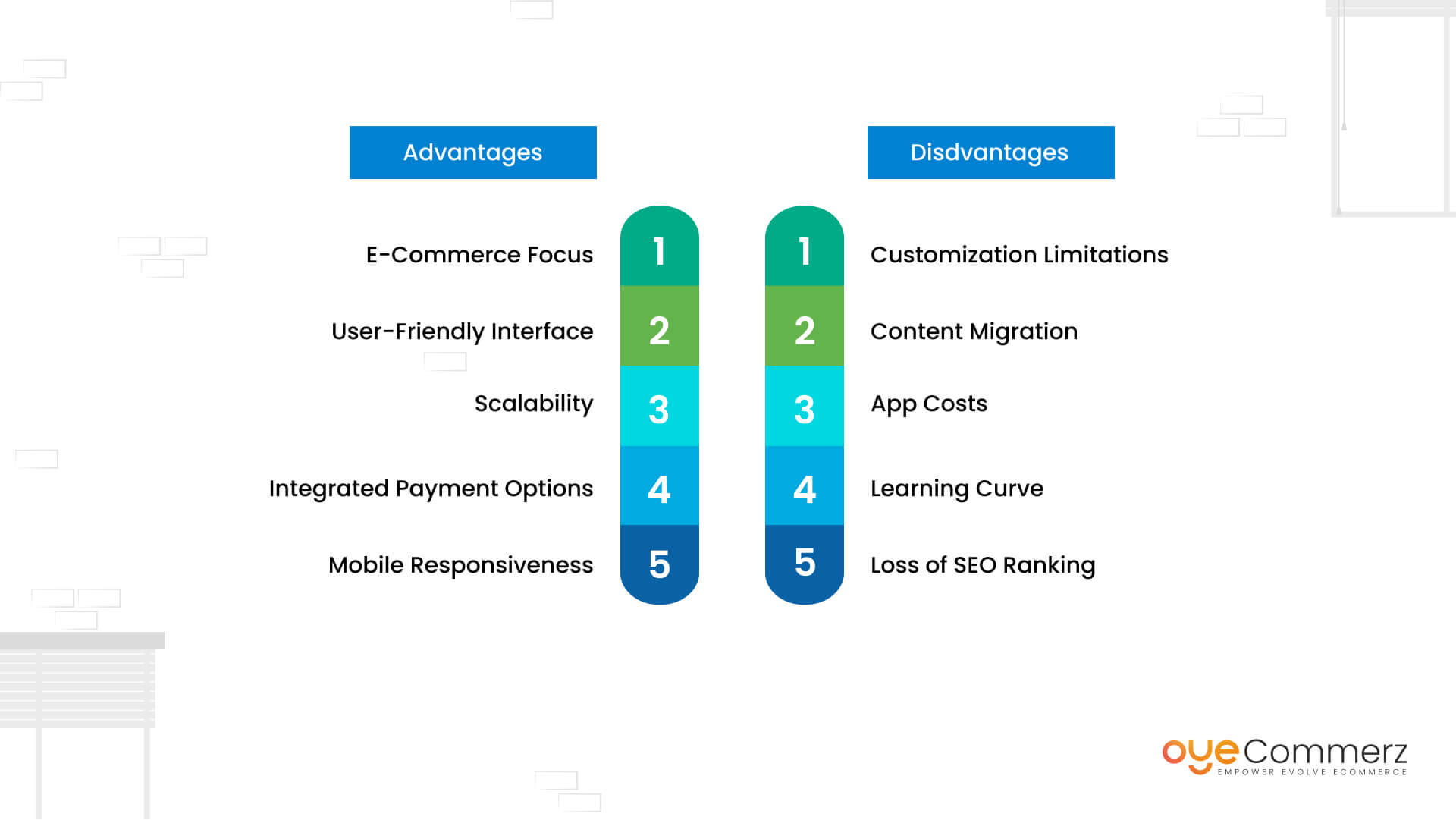Shifting from WordPress to Shopify is an exciting step in optimizing your online store operations. As companies grow, choosing a platform that supports scalability, user experience, and flexibility becomes crucial. Shopify is widely recognized as a preferred choice for e-commerce professionals, offering unmatched flexibility, security, and user-friendliness. In this guide, we’ll explore the transformative impact of this migration, highlight the advantages, and share practical tips to facilitate a seamless transition.
1. Why Migrate from WP to Shopify?
The combination of WordPress and WooCommerce, has served countless e-commerce platforms. Nevertheless, as companies expand, challenges like plugin dependency, data risks, and complex setups often obstruct growth. Shopify, designed explicitly for digital retail, addresses these concerns with an all-in-one, user-friendly platform. Statistics back this transition—Shopify hosts over 4.4 million websites globally, with a documented 10% increase in sales performance for numerous merchants post-switch.
2. Shopify's Advantages for Thriving Online Stores
Shopify’s robust ecosystem caters for expanding brands. Its notable benefits are:
- Effortless Design Flexibility: Shopify offers over 80 professionally designed themes.
- Integrated Tools: Capabilities such as Shopify Payments and integrated SEO save time and effort.
- International Expansion: Currency versatility and regional customization empower brands to expand internationally.
Additionally, Shopify boasts an uptime rate of 99.98%, guaranteeing your website remains accessible.
3. Preparing for WP to Shopify Migration
Prior to starting the migration process, assess your current store. Review inventory details, client information, and search engine rankings. Resources such as Shopify’s Migration Kit or external tools help ease the transition. Develop a comprehensive plan, ensuring all assets—item details, images, and blog content—are optimized for transfer.
4. The Importance of Accurate Data Migration
Data migration forms the foundation for a smooth transition. When migrating from WordPress to Shopify, focus on:
- Product Information: SKU, descriptions, and categories.
- Client Information: Emails, purchase records, and preferences.
- SEO Optimization: Preserve meta tags, URLs, and forwarding paths to avoid SEO losses.
Leverage tools such as LitExtension to facilitate seamless migration while minimizing errors.
5. Customizing Your Shopify Store
Post-migration, personalizing your Shopify store helps it aligns with your brand. Utilize Shopify’s intuitive page builder to create layouts with ease. Shopify's themes are optimized for all devices, ensuring a seamless UX across devices—a key point, given 74% of e-commerce traffic is generated by mobile users.
6. How to Protect Your SEO Rankings When Switching Platforms
SEO is vital for preserving your visibility during migration. Shopify excels in SEO with organized link formatting, preloaded features, and seamless blog integration. Ensure:
- Set up URL forwarding for old URLs.
- Enhance updated content with targeted phrases.
- Leverage plugins like Plug in SEO to track analytics after the switch.
7. Essential Tests After Migrating to Shopify
After finishing the transfer, run detailed checks.
Review:- Website speed (Shopify delivers faster speeds in contrast with WP).
- Functionality of payment gateways and checkout processes.
- Mobile responsiveness.
Quality assurance ensures your store delivers a seamless shopping experience from day one.
8. Case Study of a Successful Migration
One such migration success story is Gymshark, a fitness apparel brand that moved to Shopify. Post-migration, the company experienced a 60% increase in mobile sales and reduced site downtime. This showcases the capabilities of Shopify in driving e-commerce growth.
9. Challenges and Solutions
Migration comes with challenges, such as information accuracy and reconfiguring custom functionalities. However, Shopify’s extensive assistance and external professionals make overcoming these hurdles manageable. Partnering with qualified Shopify developers helps guarantee a trouble-free transition.
10. Starting Your Journey with Shopify
Switching from WordPress to Shopify marks a forward-thinking decision to e-commerce. By addressing scalability, streamlining operations, and improving buyer satisfaction, Shopify empowers businesses to thrive in challenging industries.
Conclusion
Transitioning from WordPress to Shopify offers a smart solution that can significantly boost your e-commerce success. With a well-structured strategy, the right tools, and professional Shopify advanced features guidance, you can achieve new growth opportunities.
Excited to start Expert Shopify developers the journey? Let’s discuss how our Shopify migration services can revolutionize your e-commerce platform. Contact us now, or ask yourself: Is it time to seize Shopify’s advantages for your store?

Comments on “Effortless Transition from WP to Shopify: A Comprehensive Roadmap for E-commerce Growth”